How to Thin Fruit Trees
This post may contain affiliate links, view our disclosure policy for details.
Learn how to thin fruit trees. If you grow your own fruit, thinning your trees will help them grow larger and sweeter fruit. It will benefit the tree too and will ensure better production for years to come.
Thinning, if it’s vegetables (like thinning carrots) or fruit, is the hardest job for a gardener.
Your heart is aching when you pull or pick what looks like a perfectly good veggie or fruit. But as much as it’s painful, even a gardener with the tiniest amount of experience will tell you that thinning is absolutely necessary.
How to Thin Fruit Trees…
If you grow fruit trees, thinning your fruit is part of a very good orchard management plan. Here is what we are going to go over…
- Benefits of Thinning Fruit Trees.
- When to Thin Fruit Trees.
- Which Fruit Trees Need Thinning.
- Which Fruit Trees Do Not Need Thinning.
- How to Thin Fruit Trees.
Benefits of Thinning Fruit Trees…
Prevent you from losing fruit – thinning the fruit on your tree will help prevent fruit from dropping to the ground too early.
Prevent limb damage – it will help prevent limb damage from the weight of too much fruit. Damaged branches attract bugs and are more prone to disease so keeping your tree as damage-free as possible throughout the season is very important.
Improve sun and air circulation – thinning will also improve sun and air circulation around the remaining fruit, allowing them to ripen fully.
Prevent biennial bearing – thinning your fruit tree, will stimulate next year’s fruit production and will help avoid biennial bearing. Biennial bearing is when a fruit tree bears fruit every other year because it’s exhausted. It is a common complaint among gardeners and thinning can help prevent that.
Improve the quality of your harvest – but most importantly, thinning your fruit tree will improve the fruit size, the color, and the quality of the remaining fruit. Instead of picking small fruit with a large pit inside of it, your harvest will be sweet, meaty, and healthy.
When to Thin Fruit Trees…
You want to thin your fruit at an early stage before the fruit grows larger than one inch in diameter.
Which Fruit Trees Need Thinning…
There are different thinning requirements for each kind of fruit tree and not all fruit trees should be thinned. Here are the ones that should be thinned…
Apricots and plums – thin fruit to 3’’-6’’ apart (make this amazing plum and apple jam with your harvest).
Peaches and nectarines – thin fruit to 5’’-6’’ apart (make this amazing peach jam with your harvest).
Apples – apple grow in clusters with one main flower in the center and others around it. The large, center flower usually becomes a fruit first. Since it has a head start on all the others, it is usually the largest. So thin all the fruit in the cluster but leave the center one (make this amazing apple butter with your harvest).
Pears – leave one or two pears in a cluster. You want your fruit about 4’’ apart.
Persimmon – thin to 8’’-10’’ apart. For young trees, you don’t want more than a couple of fruits on each branch (make this amazing persimmon jam with your harvest).
Which Fruit Trees Do Not Need Thinning…
Here are the trees that do not need to be thinned…
Citrus trees – they naturally thin themselves 9make this amazing orange jam with your harvest).
Fig trees – figs usually grow a good distance apart (make this amazing fig jam with your harvest).
Cherry trees – usually there is no need to thin this tree. However, if your tree is unhealthy, if too much fruit is dropping or if the tree does not bear fruit every year then consider thinning to no more than 10 cherries per cluster.
Pomegranate – this tree bears fruit from spurs near the tip of the branches. If you prune your tree correctly every winter you won’t need to thin the fruit. If you do choose to thin, you will have to thin branches instead of the fruit itself.
Mulberries – no need to thin those (make this amazing mulberry jam with your harvest).
How to Thin Fruit Trees…
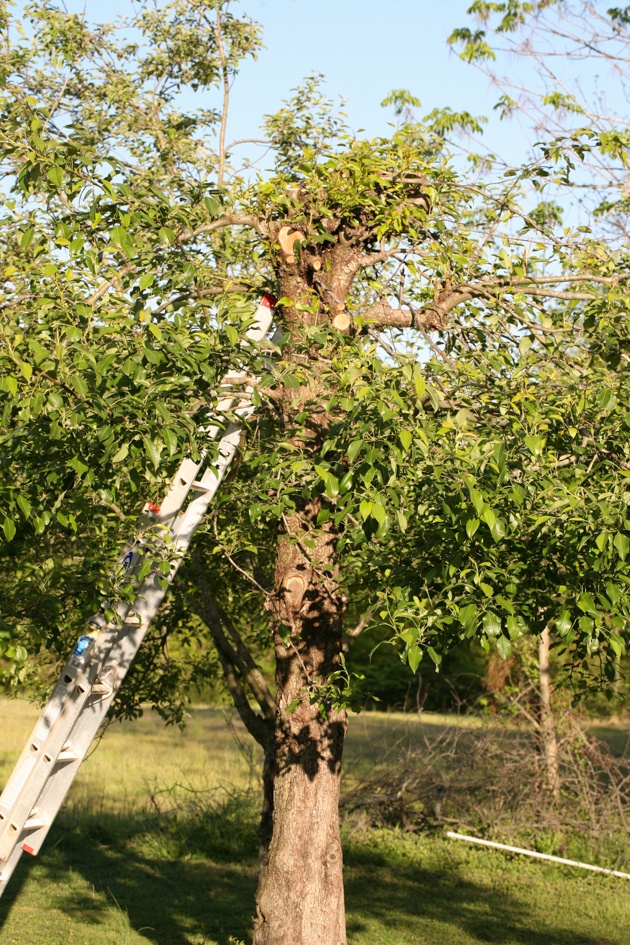
This pear tree was on the property when we bought our country house. It is an old tree (I am not sure exactly how old) that was neglected for years. It was huge, the branches were all over the place, it was sick, and didn’t produce one good pear a year.
In early spring, we cut the whole top of it off. Aggressive pruning to say the least. We didn’t do much more than that, just because life got in the way, but apparently even just cutting down the top of it did good because just a couple of months later I noticed tiny little pears on it.
I decided to thin the fruit and see if the tree can manage to bring the remaining fruits to ripen.
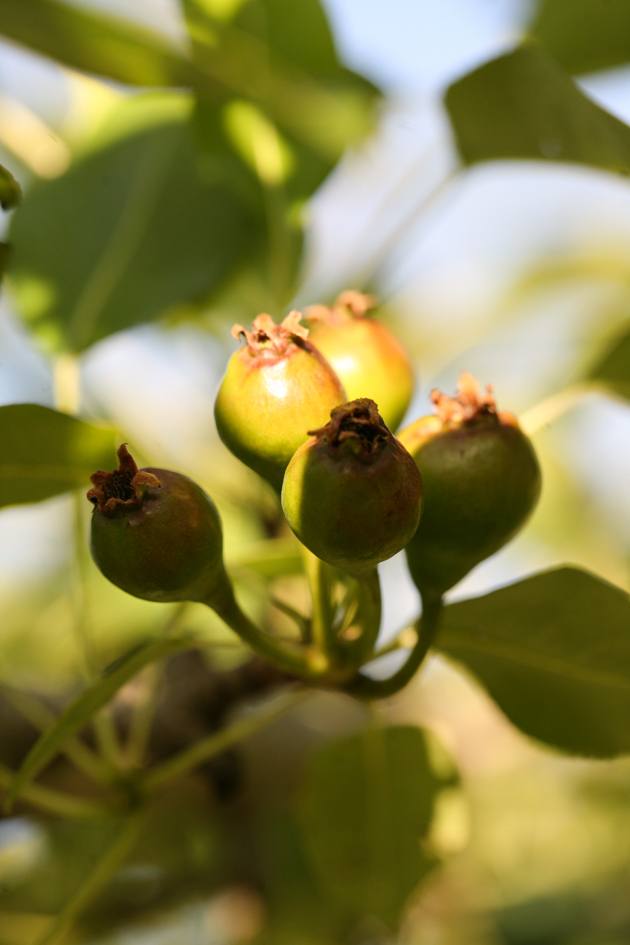
Pears, like many other kinds of fruit, grows in clusters. You want to make sure that you leave just one or two fruits per cluster…
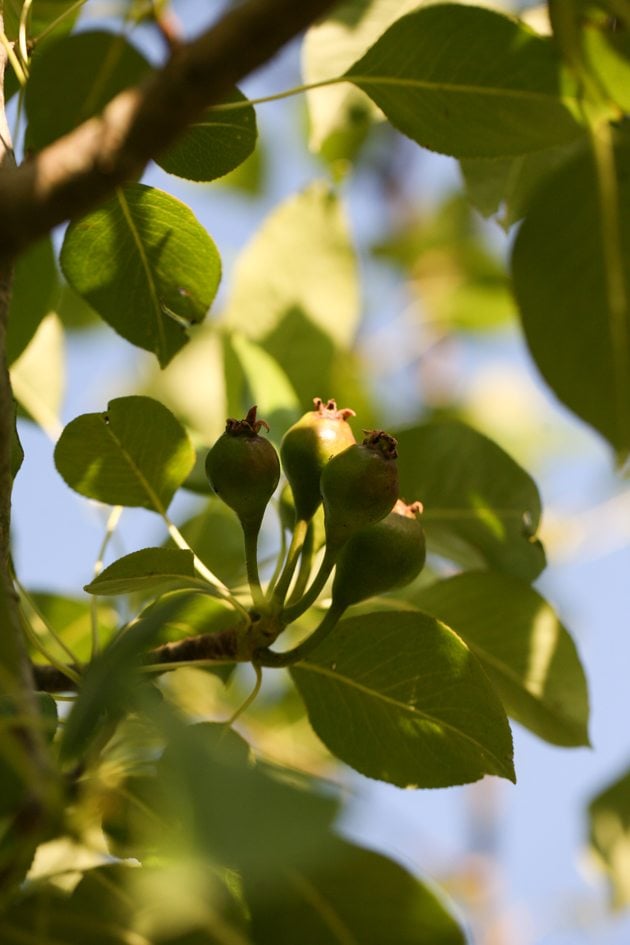
Even though the tree produced some fruit, there is not a whole lot of it, so you can imagine how painful it was to thin the little bit that I did have. But it had to be done or I wouldn’t get any fruit at all.

There is no special tool required here, just your hands and maybe a ladder.
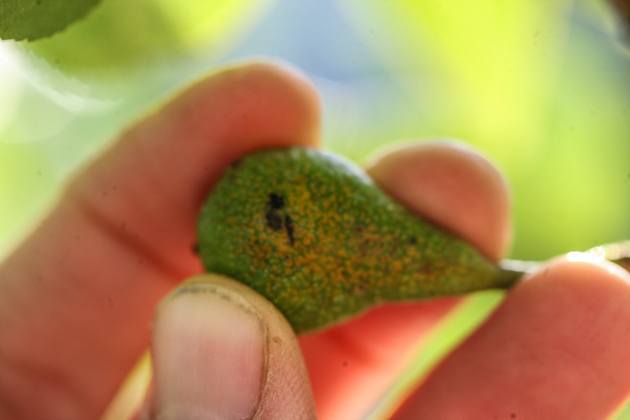
Try to thin out damaged fruit or fruit that just looks unhealthy first. Then thin out the smaller fruit. Until you are left with one or two pears per cluster.
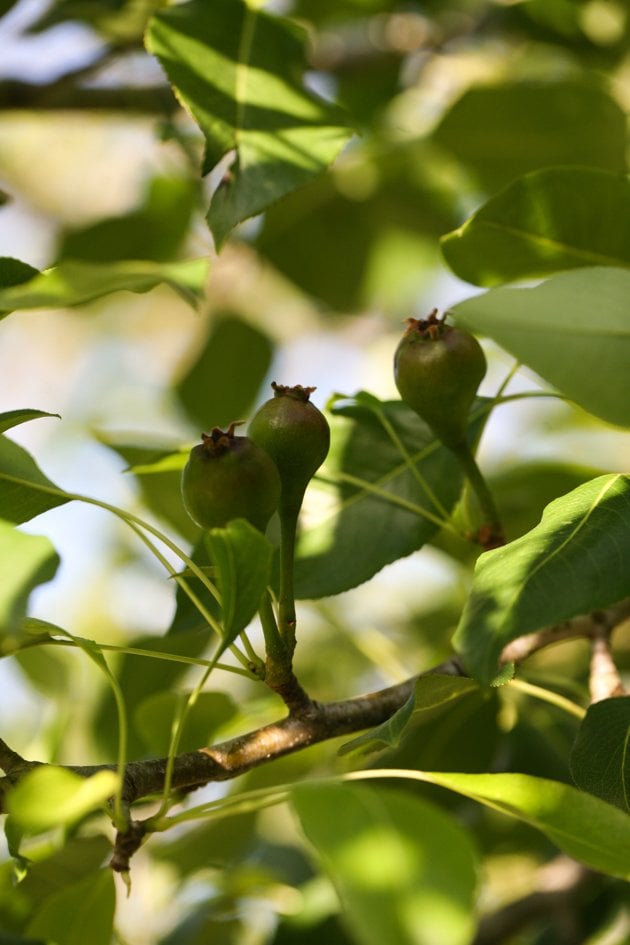
Thinning might be hard on the gardener’s heart, but it’s not a hard job to complete. You simply break the fruit off with your fingers. In most cases, you will be done with fruit tree thinning by July.
Another important point is to make sure you collect the fruit you thinned and take it away from the tree. Don’t leave it on the ground by the tree because it will attract pests and you don’t want those guys to find your tree.
I’m not sure if you can feed the green, unripe fruit to animals… I want to say that chickens can probably eat everything but am not sure about other animals so if this is your plan do your research first. Just remember that there is a pit in there for most of the fruit you’ll thin.
Also, it will take a whole lot of time for the pit to decompose, so even adding the fruit to your compost pile can be problematic. You can still do that or otherwise, you can just throw the fruit in the garbage.
So really, thinning is a rather easy job especially if you prune your tree correctly every winter and make sure to keep its size and height manageable.
If you take just a few minutes per tree at the right time for thinning you will enjoy beautiful and tasty fruit and your tree will produce every year.
It might take a few seasons to learn how much you can expect from each tree. Don’t forget that as the tree grows, you will have more fruit to thin but also more fruit to harvest. Don’t give up on thinning!
Growing Fruit Trees…
If you liked this post, make sure to check these other ones as well…
5 Steps For Choosing the Best Backyard Fruit Trees
How to Plant Bare Root Fruit Trees
How to Prune Fruit Trees to Keep Them Small

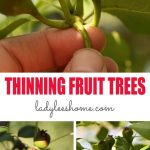
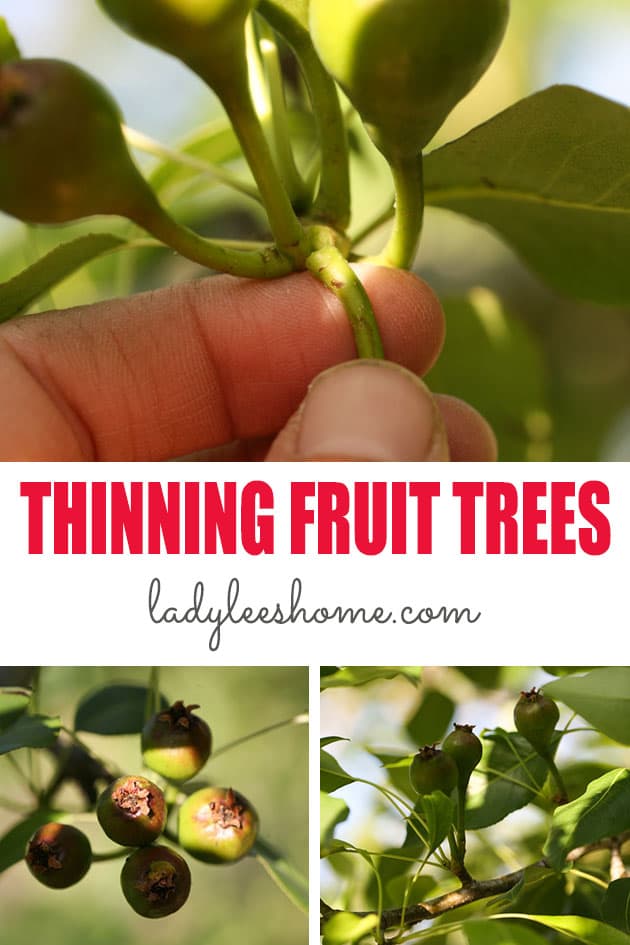
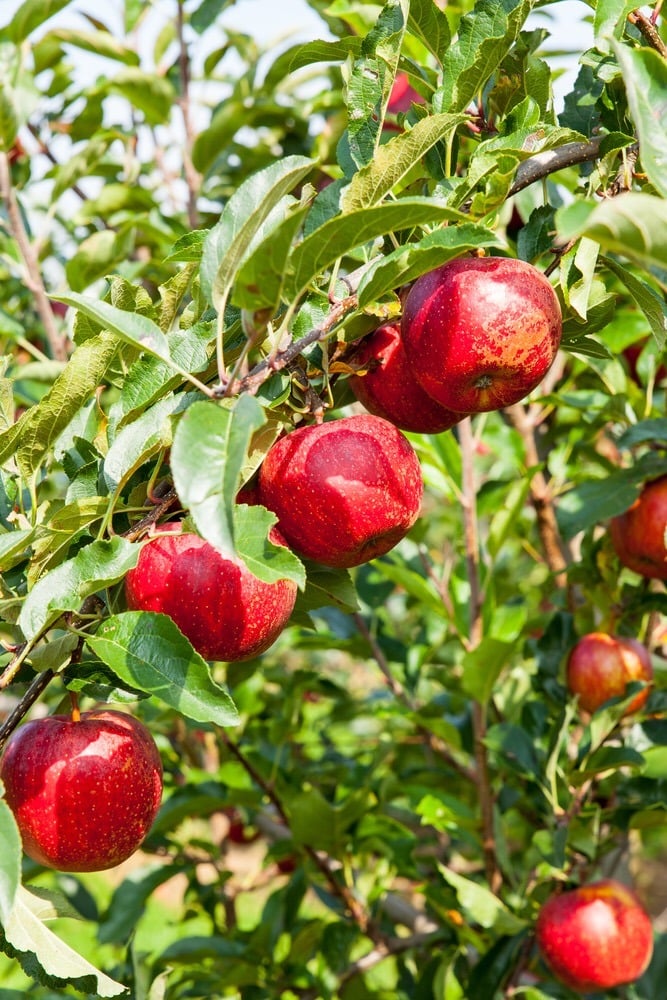
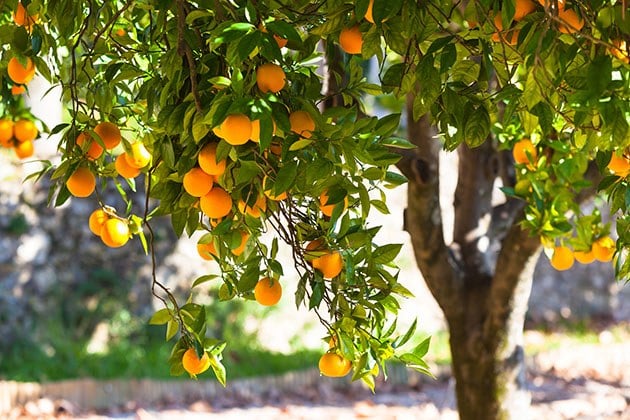
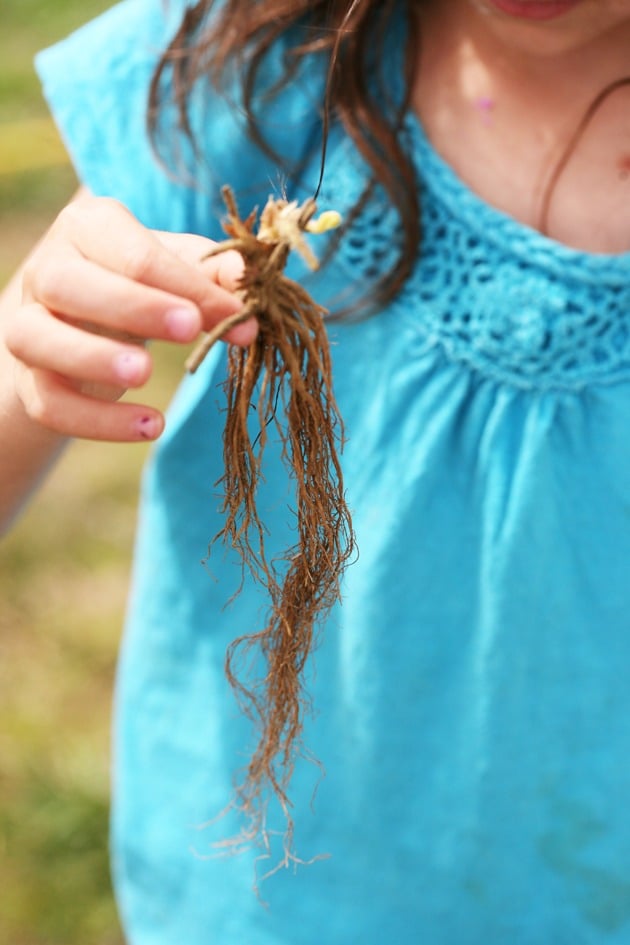
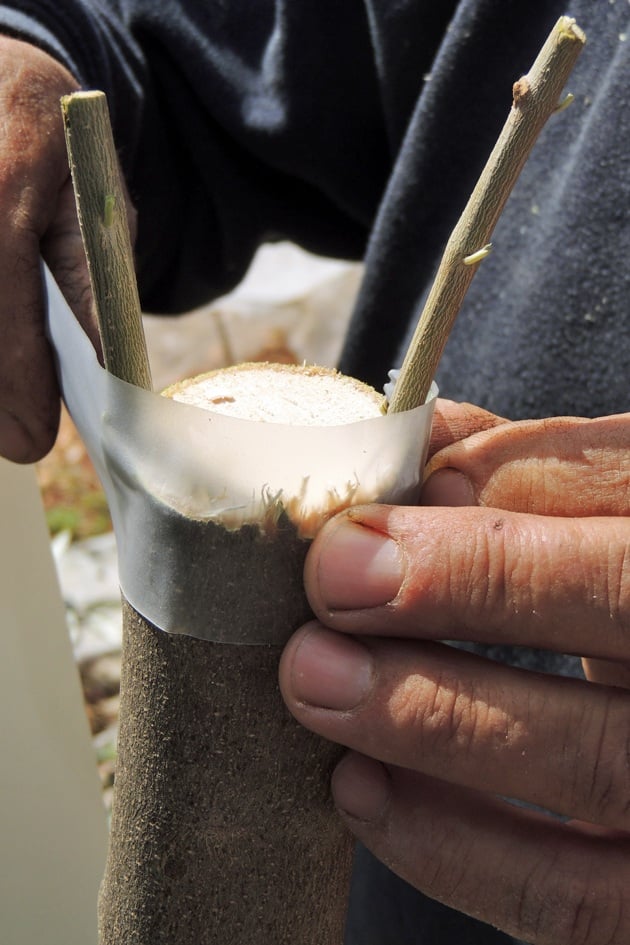

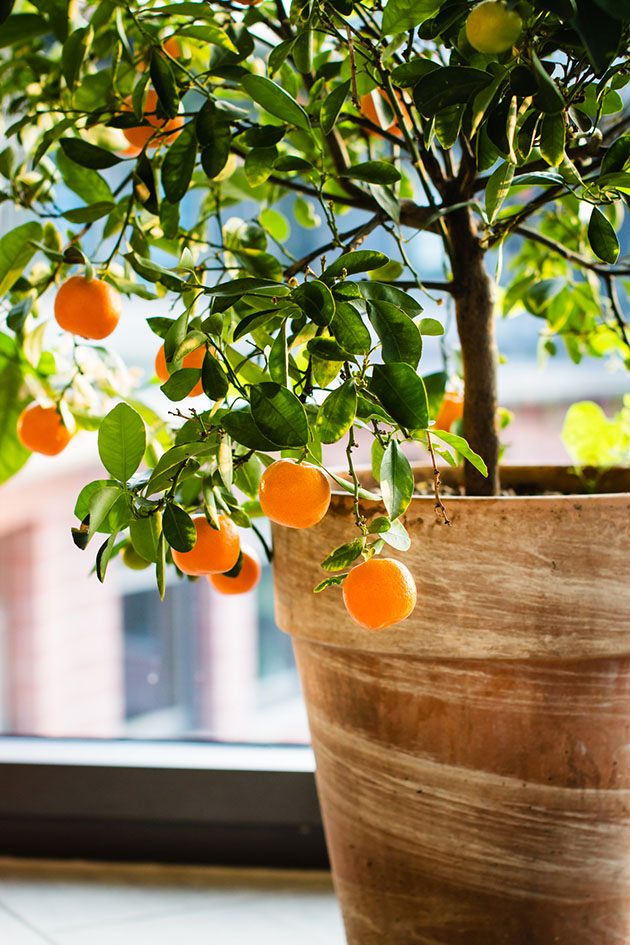
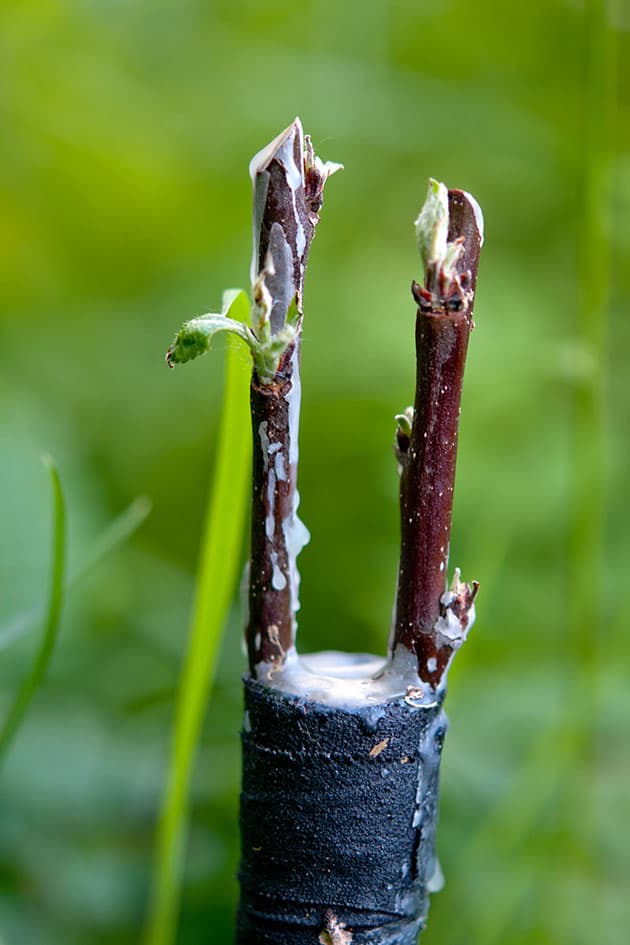
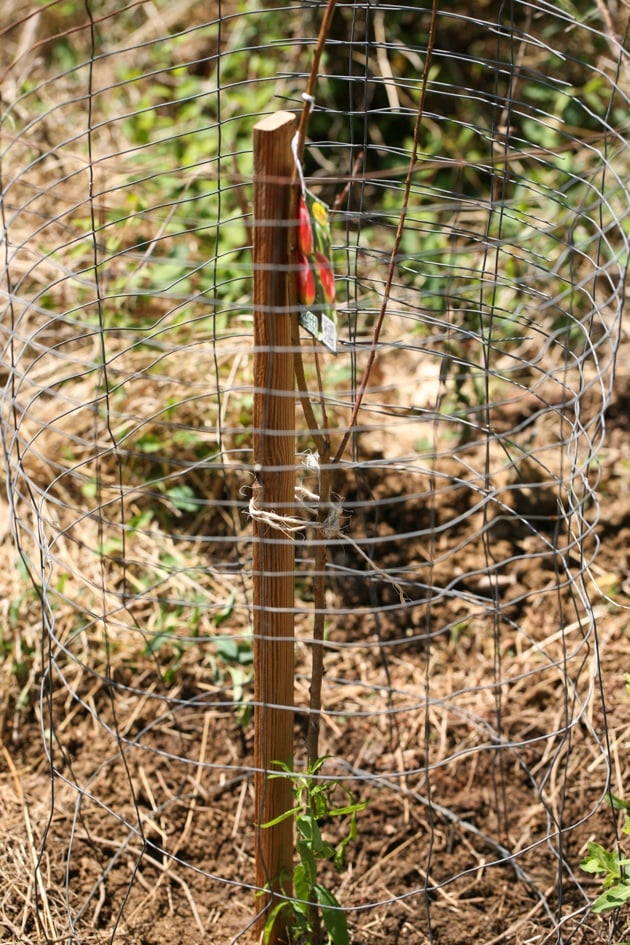
Great article Lee! There’s a few things I have learned growing my young (7 years) fruit trees. I started them from bare root and have been challenged to keeping them to a size I can care for & harvest from safely at my age. Access with a 6 foot ladder keeps my trees to about 8 feet and that keeps me harvesting mostly from the ground. I now do 2 prunings a year, the heavy one is done in winter to retain the size and shape of my trees. This also produces a tree with a strong trunk & major fruit producing branches. In the spring at the end of my winter branch prune-spot you will see new growth… a “green ring” forms and from that new branches have grown. Sometimes 3 to 4 new branches have grown from this cut-ring spot. After my trees have set fruit and put on some size this will take me into June and the trees start to do what is called “June Drop”. The tree will self abort some of the un-pollinated fruits and I get hit with some wind storms and I always get some blow-off. Then I start my “Summer Prune”. I carefully prune off all the spring sprouted branches from the tips and any side-branch off-shoots that are un-necessary. This now allows the tree to focus energy, water, & food nutrients to the fruit while opening the tree to sun exposure for the health of the whole tree and ripening of the fruit. At this time I also remove fruit to the “King” and “Queen” (2 largest). My results from doing this last year was ENORMOUS! I was a bit shocked actually! These cut backs allowed the trees to grow more fruit “spurs” on the mature branches. I always have that spring growth ring to fall back too during winter prune.
Sounds like a good strategy to prune twice. It totally makes sense because the tree can devote more energy to the fruit this way. I’ll try this next year.
The first time I tried this technique was at harvest time and my branch cuts were taken to just above a producing fruit spur at a bud. It’s also very important to not damage the developed “spur” when harvesting because it will produce the following year on it. You’ll notice that knowledgeable orchard workers use a sharp knife to remove fruits, I don’t because my cats get under foot, I use dull-pointed scissors.